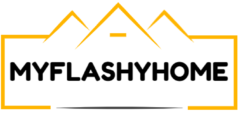When selling a home, few decisions are as pivotal as determining the right asking price. A properly priced home attracts serious buyers, minimizes time on the market, and often results in a sale close to or even above the original asking price. But pricing a home isn’t as simple as picking a number. It’s a nuanced process, requiring a balance between market trends, property value, and buyer psychology. Let’s explore strategies that can help home sellers confidently establish an asking price that aligns with their goals.

The Market’s Role in Pricing Decisions
The first step in setting the right asking price is a deep dive into your local real estate market. Markets can fluctuate wildly based on economic conditions, interest rates, and even the time of year. For instance, a seller’s market, characterized by high demand and low inventory, may allow you to price your home more aggressively. Conversely, a buyer’s market where inventory is plentiful and demand is tepid requires a more competitive pricing approach to attract attention.
Comparative Market Analysis (CMA) is an invaluable tool in this process. By analyzing recently sold properties similar to yours in size, condition, and location, you can establish a baseline for pricing. However, it’s essential to look beyond averages. Are homes in your area selling quickly or languishing on the market? Are buyers favoring turnkey properties, or are they willing to invest in fixer-uppers? Understanding these nuances will give you a clearer picture of where your home fits into the broader market landscape.
Pricing: It’s Not Just Math
Pricing isn’t just about numbers; it’s also about perception. Buyers often make subconscious judgments based on the price tag alone, and slight differences in pricing can significantly influence their behavior. For instance, pricing your home at $399,000 instead of $400,000 can make it feel more attainable, even though the difference is negligible. This strategy, known as charm pricing, plays on the psychological tendency of consumers to focus on the first number they see.
Another psychological factor to consider is the anchoring effect. When buyers see a price, it becomes their benchmark for assessing value. If your asking price is too high, buyers may dismiss your property altogether, assuming it’s out of their budget or not worth the premium. On the other hand, pricing too low can lead to skepticism about the property’s quality or condition. Striking the right balance is crucial, and often, a small adjustment can make a significant difference in how buyers perceive your home’s value.
Positioning for Maximum Appeal
To attract the right buyers, your pricing strategy must align with your overall marketing approach. This includes understanding who your ideal buyer is and what they value most. Are you targeting first-time homebuyers, luxury seekers, or downsizing retirees? Each demographic has different priorities, and your pricing should reflect their expectations.
If your home features standout elements a freshly renovated kitchen or a prime location near top-rated schools these can serve as strong justification for a higher price point. Showcasing these details in your listing enhances the perception of value and attracts serious buyers. To maximize your success, working with experienced real estate professionals is essential. Kitsap Home Pro offers customized insights and proven strategies to help you sell your home quickly, ensuring your needs and timeline are prioritized.
Flexibility and Adjustments
Even with the best strategies in place, the market’s reaction to your asking price may surprise you. This is where flexibility becomes vital. Pay close attention to feedback from showings, online inquiries, and your real estate agent. If your home is getting traffic but no offers, the price may be slightly off. Conversely, if you receive multiple offers within days, it could indicate that your home was underpriced, potentially leaving money on the table.
Adjustments don’t always mean lowering the price. Sometimes, refining your marketing approach can make a significant difference. High-quality photography, virtual tours, and professional staging can amplify your home’s appeal, making the asking price feel more justified. If adjustments to pricing are necessary, act swiftly and decisively. A home that lingers on the market too long may develop a stigma, leading potential buyers to assume there’s something wrong with it.
Seasonal and Economic Influences
The timing of your listing can also affect your asking price. Spring and early summer are typically the most active periods for real estate transactions, as families aim to move before the new school year. Homes listed during these peak seasons often command higher prices due to increased competition among buyers.
Economic factors also play a role. Rising interest rates, for instance, can reduce buyers’ purchasing power, while a booming economy may lead to more aggressive offers. Staying informed about these broader trends and how they impact your local market will help you set an asking price that’s both competitive and realistic.
Finding the Sweet Spot
Setting the right asking price is as much an art as it is a science. By combining a thorough understanding of market conditions with insights into buyer psychology and strategic positioning, you can maximize your home’s value while minimizing the time it spends on the market. Remember, pricing isn’t a static decision. Be prepared to adapt and refine your strategy based on feedback and market dynamics. With the right approach, you can achieve a successful sale that meets your financial and personal goals.

